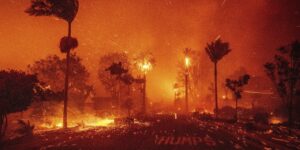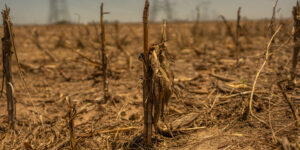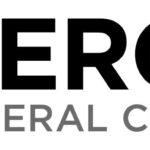
Fires jumping the Sierra Nevada mountains for the first time on record. Towering fire tornadoes. Hazy, ashen smog traveling thousands of miles to blanket the East Coast. Wildfires encroaching on tourist destinations and urban areas. The 2021 wildfire season may not have burned as many acres 2020’s record-shattering devastation, but it was no less notable for its disruptive chaos.
In our newest report, Fuel to the flame: A review and analysis of wildfire risk in 2021 and beyond, we take the measure of another year of record-setting wildfires, analyzing the complex role climate change is playing in fueling global wildfire risk, the volatility of reconstruction costs, what we can learn about evolving wildfire exposure from residential permitting data, and the crucial role mitigation continues to play in battling this destructive peril.
2021 at a glance
A total of 54,000 fires scorched approximately 7.1 million acres in 2021, down from the 10.1 million acres that burned in 2020, and just slightly below the 10-year average of 7.3 million acres.
The 2021 season was remarkable in many respects:
- For the first time ever, a wildfire burned its way from one side of the Sierra Nevada mountain range to the other—and not once, but twice.
- The massive Bootleg Fire in Oregon was credited with creating dangerous new weather patterns all the way on the East Coast.
- The Caldor Fire surged close enough to the popular tourist destination of Lake Tahoe to cause tens of thousands to evacuate and businesses to shutter during the busy tourist season.
- Finally, the Marshall Fire, which burned into the new year, set a dangerous new precedent for the movement of fires through concentrated urban areas.
A costly peril, compounded by reconstruction cost volatility
For many insurers, last year’s wildfires weren’t just novel, they were costly, resulting in an estimated $4 billion in losses, according to Property Claims Services®, a Verisk business. The challenge of the 2021 wildfire season was compounded by pandemic-induced supply chain disruptions and volatile reconstruction costs. Materials specifically experienced a large spike driven partially by lumber prices, which peaked in July 2021, according to Verisk reconstruction cost estimates.
As drought conditions in the western United States persist and climate change shifts seasonal snowmelt patterns and leads to drier vegetation, 2022 may not offer much of a reprieve.
In the face of this staggering challenge, mitigation efforts have become all-the-more critical. Verisk has established several critical partnerships with organizations focused on wildfire mitigation, including the National Fire Protection Association (NFPA) and the International Association of Fire Chiefs. Verisk offers granular data from these organizations to help insurers better understand community-level mitigation efforts.
To get an in-depth view of the 2021 wildfire season, please download Verisk’s new report.
By: Dr. Arindam Samanta, Product Director, Personal Lines, Verisk




















 State Farm Pausing Nonrenewals in Compliance With CDI Notice
State Farm Pausing Nonrenewals in Compliance With CDI Notice  Leading Insurance Innovation in the AI Age (Part 2: Tech Project Pitfalls)
Leading Insurance Innovation in the AI Age (Part 2: Tech Project Pitfalls)  Mercury General Gives Reinsurance Update: One or Two Events Still TBD
Mercury General Gives Reinsurance Update: One or Two Events Still TBD  Significant But ‘Manageable’ Insurance Losses Expected From LA Fires: S&P
Significant But ‘Manageable’ Insurance Losses Expected From LA Fires: S&P 